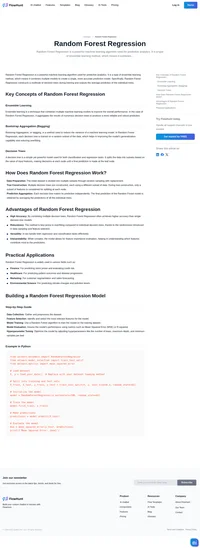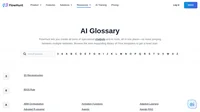A decision tree is a powerful and intuitive tool used for decision-making and predictive analysis. It is a non-parametric supervised learning algorithm, often employed for both classification and regression tasks. Its structure resembles a tree, starting with a root node and branching out through decision nodes to leaf nodes, which represent outcomes. This hierarchical model is favored for its simplicity and interpretability, making it a mainstay in machine learning and data analysis.
Structure of a Decision Tree
- Root Node: The starting point of the tree, representing the entire dataset. It is the place where the first decision is made. The root node contains the initial question or split based on the most significant feature in the dataset.
- Branches: These represent the possible outcomes of a decision or test rule, leading to the next decision node or a terminal outcome. Each branch represents a decision path that leads to either another decision node or a leaf node.
- Internal Nodes (Decision Nodes): Points at which the dataset is split based on specific attributes, leading to further branches. These nodes contain questions or criteria that split the data into different subsets.
- Leaf Nodes (Terminal Nodes): Final outcomes of the decision-making path, representing a classification or decision. Once a decision path reaches a leaf node, a prediction is made.
Decision Tree Algorithms
Several algorithms are used to construct decision trees, each with its unique approach to splitting data:
- ID3 (Iterative Dichotomiser 3): Utilizes entropy and information gain to decide the best attribute for data splitting. It is primarily used for categorical data.
- C4.5: An extension of ID3, it handles both categorical and continuous data, using gain ratios for decision-making. It can also manage missing data points.
- CART (Classification and Regression Trees): Uses the Gini impurity measure to split nodes and can handle both classification and regression tasks. It produces a binary tree.
Key Concepts
- Entropy: A measure of impurity or disorder within a dataset. Lower entropy indicates a more homogenous dataset. It is used to determine the quality of a split.
- Information Gain: The reduction in entropy after a dataset is split on an attribute. It quantifies the effectiveness of a feature in classifying data. Higher information gain indicates a better attribute for splitting.
- Gini Impurity: Represents the probability of incorrectly classifying a randomly chosen element if it were labeled randomly. Lower Gini impurity indicates a better split.
- Pruning: A technique used to reduce the size of a tree by removing nodes that provide little power in classifying instances. It helps prevent overfitting by simplifying the model.
Advantages and Disadvantages
Advantages:
- Easy to Interpret: The flowchart-like structure makes it easy to visualize and understand the decision-making process. Decision trees provide a clear representation of decision pathways.
- Versatile: Can be used for both classification and regression tasks. They are applicable in various domains and problems.
- No Assumption about Data Distribution: Unlike other models, decision trees do not assume any distribution about the data, making them flexible.
Disadvantages:
- Prone to Overfitting: Particularly complex trees can overfit the training data, reducing generalization to new data. Pruning is essential to mitigate this issue.
- Instability: Small changes in data can lead to significantly different tree structures. This sensitivity can affect model robustness.
- Bias Towards Dominant Classes: Features with more levels can dominate the tree structure if not handled correctly, leading to biased models.
Use Cases and Applications
Decision trees are widely used across various domains:
- Machine Learning: For classification and regression tasks, such as predicting outcomes based on historical data. They serve as a base for more complex models like Random Forests and Gradient Boosted Trees.
- Finance: Credit scoring and risk assessment. Decision trees help in evaluating the likelihood of default based on customer data.
- Healthcare: Diagnosing diseases and recommending treatments. Decision trees assist in making diagnostic decisions based on patient symptoms and medical history.
- Marketing: Customer segmentation and behavior prediction. They help in understanding customer preferences and targeting specific segments.
- AI and Automation: Enhancing chatbots and AI systems to make informed decisions. They provide a rule-based framework for decision-making in automated systems.
Examples and Use Cases
Example 1: Customer Recommendation Systems
Decision trees can be employed to predict customer preferences based on past purchase data and interactions, enhancing recommendation engines in e-commerce. They analyze purchase patterns to suggest similar products or services.
Example 2: Medical Diagnosis
In healthcare, decision trees assist in diagnosing diseases by classifying patient data based on symptoms and medical history, leading to suggested treatments. They provide a systematic approach to differential diagnosis.
Example 3: Fraud Detection
Financial institutions use decision trees to detect fraudulent transactions by analyzing patterns and anomalies in transaction data. They help in identifying suspicious activities by evaluating transaction attributes.
Conclusion
Decision trees are an essential component of the machine learning toolkit, valued for their clarity and effectiveness in a wide range of applications. They serve as a foundational element in decision-making processes, offering a straightforward approach to complex problems. Whether in healthcare, finance, or AI automation, decision trees continue to provide significant value through their ability to model decision paths and predict outcomes. As machine learning evolves, decision trees remain a fundamental tool for data scientists and analysts, providing insights and guiding decisions in various fields.
Decision Trees and Their Recent Advances
Decision Trees are machine learning models used for classification and regression tasks. They are popular due to their simplicity and interpretability. However, decision trees often suffer from overfitting, especially when the trees become too deep. Several recent advancements have been made to address these challenges and improve the performance of decision trees.
One such advancement is described in the paper titled “Boosting-Based Sequential Meta-Tree Ensemble Construction for Improved Decision Trees” by Ryota Maniwa et al. (2024). This study introduces a meta-tree approach, which aims to prevent overfitting by ensuring statistical optimality based on Bayes decision theory. The paper explores the use of boosting algorithms to construct ensembles of meta-trees, which are shown to outperform traditional decision tree ensembles in terms of predictive performance while minimizing overfitting. Read more
Another study, “An Algorithmic Framework for Constructing Multiple Decision Trees by Evaluating Their Combination Performance Throughout the Construction Process” by Keito Tajima et al. (2024), proposes a framework that constructs decision trees by evaluating their combination performance during the construction process. Unlike traditional methods like bagging and boosting, this framework simultaneously builds and assesses tree combinations for improved final predictions. Experimental results demonstrated the benefits of this approach in enhancing the prediction accuracy. Read more
“Tree in Tree: from Decision Trees to Decision Graphs” by Bingzhao Zhu and Mahsa Shoaran (2021) presents the Tree in Tree decision graph (TnT), an innovative framework that extends decision trees into more powerful decision graphs. TnT constructs decision graphs by recursively embedding trees within nodes, enhancing classification performance while reducing model size. This method maintains linear time complexity relative to the number of nodes, making it suitable for large datasets. Read more
These advances highlight ongoing efforts to enhance the effectiveness of decision trees, making them more robust and versatile for various data-driven applications.
Data-backed Content With No Fluff
Create data-driven content with FlowHunt’s AI tools. From idea generation to editing, streamline your process for engaging, SEO-optimized results!



